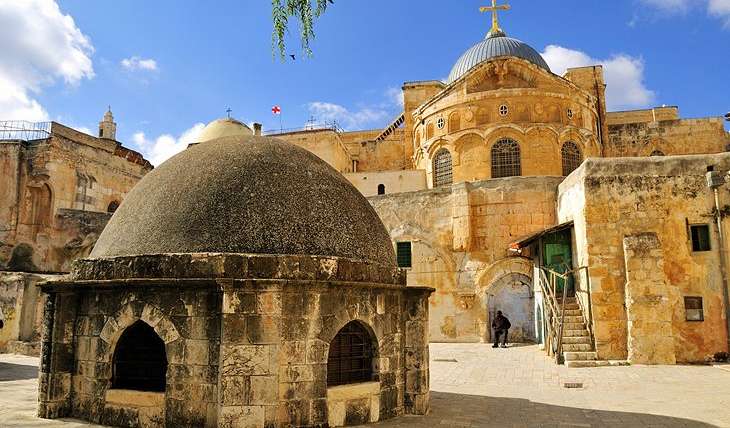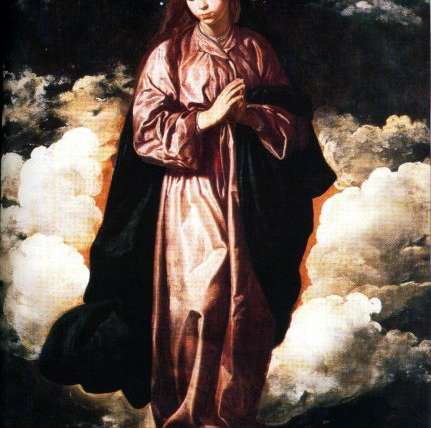Definition of The Great Schism
I have a pastor friend who served at a church that actually split over the color of carpet. One group wanted blue, the other brown, and unable to compromise, they actually went their separate ways. Although splitting over carpet might be a bit uncommon (and rather ridiculous), church splits aren’t. They’ve been happening for generations and generations, beginning with the Great Schism.
The Great Schism of 1054, also known as the ‘East-West Schism,’ divided Christianity, creating Western Catholicism and Eastern Orthodoxy. Although 1054 is the official date of this divide, tensions between the East and the West had been brewing for years. To understand what caused the final split, we’re going to take a look at the political upheaval and cultural differences of the East and the West.
We’ll then tackle the straw that broke the camel’s back: Papal authority, or in other words, the ‘power of the Pope.’ For the medieval church, this was their ‘color of the carpet’ issue – the one thing they just couldn’t compromise on and the one thing that led to the official split.
Political and Cultural Disunity
In around the year 330, Constantine moved the political capital of the Roman Empire from Rome to Constantinople. From there, he managed to rule the entire empire. However, this was no easy task, and soon the empire broke down into Western and Eastern Empires, each with their own emperors. In fact, Theodosius, who died in 395 CE, was the last emperor to rule over both halves. Although the two halves seemed to be separated politically, the Christian Church still tried to maintain its power, a task which was extremely difficult at best!
With their own emperors, and being separated by geography, the two halves grew further and further apart. Making matters worse, the Western Empire (Rome and its surrounding areas) were continually invaded by the barbarians from the North, while the Eastern Empire (now known as the Byzantine Empire) thrived.
Adding to the disunity, the Church cultures of the East and West had become vastly different. While the Western Empire clung to Latin, the Eastern Church adopted Greek. Before long, even the Eastern Bishops no longer spoke Latin, and the Western Church had never used Greek in its ceremony. As the language barrier grew, so did the differences in church practices. For instance, the two couldn’t agree on which type of bread to use in communion.
The Eastern Church also vehemently disagreed with the addition of the Filioque clause, which dealt with the authority of the Trinity – God the Father, God the Son and God the Spirit – into the Nicene Creed, or the Church’s statement of faith. Although it was eventually added, the East refused to accept it. Although this issue wasn’t as big of a deal as the power of the Papacy, it caused some real tensions and was a precursor of things to come. This leads us to the biggest point of contention: the power of the Papacy.
Power of the Papacy
To explain, from the beginning of the Church, three bishops were recognized as the head guys in charge. They were the Bishops of Rome, Alexandria and Antioch. Although these three were all very powerful, everyone knew and accepted that the Bishop of Rome (a.k.a the Pope), was the main man, being known as ‘the first among equals.’
Now, in around 451, these three were joined by the Bishops of Constantinople and Jerusalem. This made sense, as the political capital of the Empire had been moved from Rome to Constantinople over a hundred years before. After all, if the East claimed political power, they should also have a few bishops. However, the religious power was still considered to be in the West, and the Pope was still considered to be the head honcho.
Unfortunately, the Eastern Bishops didn’t quite see it this way. When the Pope tried to fold them into his robes of authority, the Eastern Bishops gave a stern, ‘No, thank you!’ Instead, they told the Pope they’d respect his position as the honorary head of the Church, but when it came to real decision making, they would take it from here. The East even went as far as calling their Bishop of Constantinople the ecumenical patriarch, meaning ‘universal patriarch.’ As you can guess, the Pope and his Western cronies were highly insulted and ready for a fight!
Schism Officially Occurs
With no compromise in sight, things went from bad to worse. Divided by language and entrenched in separate cultures, the frustration of who was in charge was too much. In 1054, the power struggle bubbled over when the Patriarch of Constantinople, Michael Cerularius, dared to condemn some of the religious practices of the Western Church. He even went as far as to close down Eastern churches that followed the same practices. Now these were fighting actions, and soon the office of Pope Leo IX and the Patriarch of Constantinople excommunicated each other.
In other words, they said to each other, ‘I’m in charge, and to prove it, I’m going to kick you out of the church.’ Unwilling to compromise, and definitely unwilling to step aside, the two parties took their proverbial toys, their proverbial carpets and went home. Thus, the Great Schism officially occurred, forming two distinct Churches within Christianity: Western Catholicism and Eastern Orthodoxy.
Lesson Summary
The Great Schism, also known as the ‘East-West Schism,’ was the official split of the Christian Church into Eastern Orthodoxy and Western Catholicism. Although 1054 is the official date of this occurrence, tensions between the two parties had been brewing for centuries. Separated by geography, language and culture, the Eastern and Western Roman Empires grew more and more distant from one another. Making it even harder to remain unified, the Western Empire was under constant barbaric invasion while the Eastern Empire flourished. This only added to the divide.
When arguments arose over the power of the Papacy, the tenuous relationship between the East and the West could stand no more. In 1054, the office of the Pope and the Patriarch of Constantinople went head to head. Each excommunicating each other and bringing about the Great Schism, forever giving the world two distinct Churches. Western Catholicism and Eastern Orthodoxy.
Source: https://study.com/academy/lesson/the-great-schism-between-the-east-and-western-churches.html



